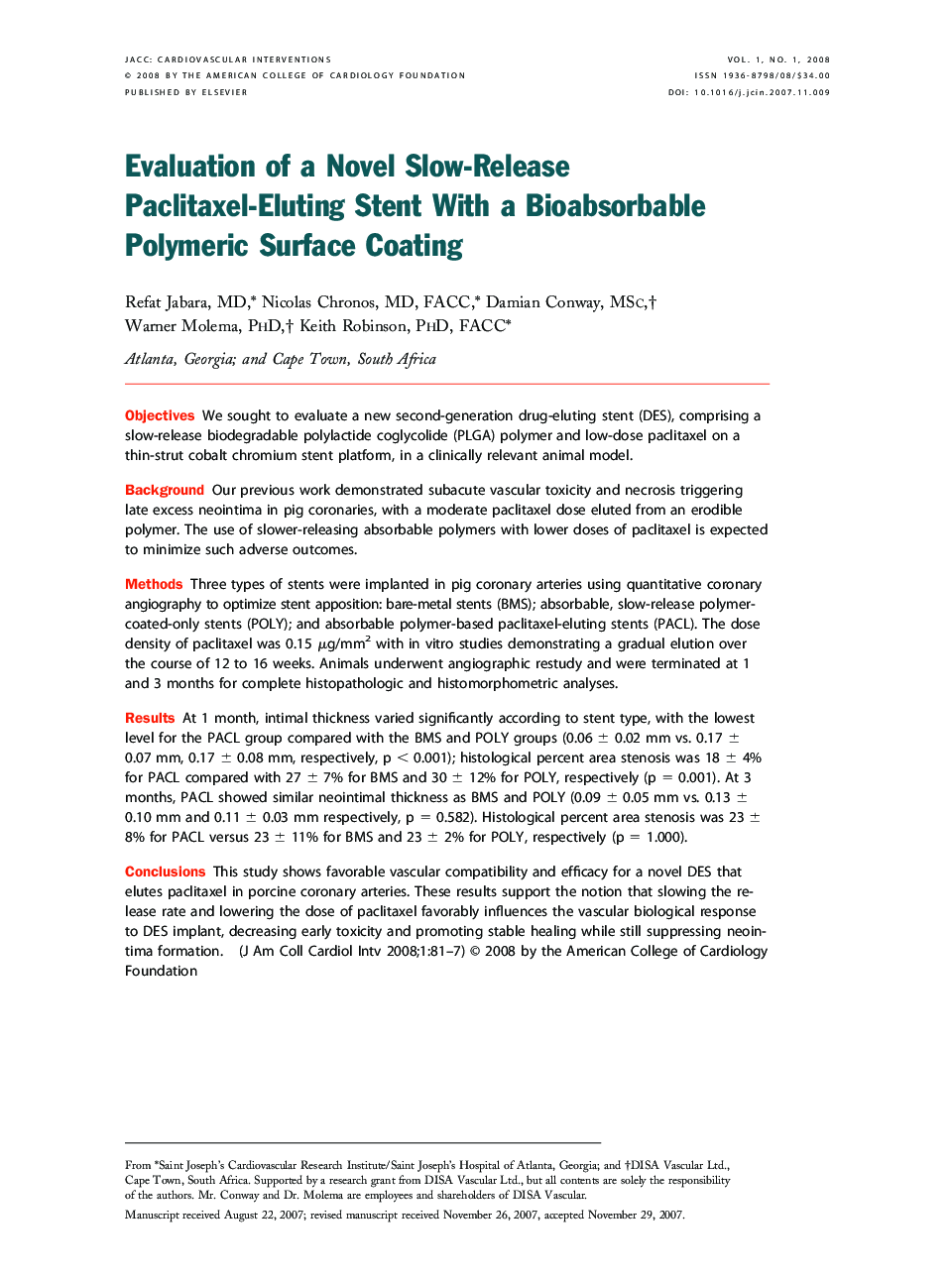| کد مقاله | کد نشریه | سال انتشار | مقاله انگلیسی | نسخه تمام متن |
|---|---|---|---|---|
| 2941943 | 1177093 | 2008 | 7 صفحه PDF | دانلود رایگان |

ObjectivesWe sought to evaluate a new second-generation drug-eluting stent (DES), comprising a slow-release biodegradable polylactide coglycolide (PLGA) polymer and low-dose paclitaxel on a thin-strut cobalt chromium stent platform, in a clinically relevant animal model.BackgroundOur previous work demonstrated subacute vascular toxicity and necrosis triggering late excess neointima in pig coronaries, with a moderate paclitaxel dose eluted from an erodible polymer. The use of slower-releasing absorbable polymers with lower doses of paclitaxel is expected to minimize such adverse outcomes.MethodsThree types of stents were implanted in pig coronary arteries using quantitative coronary angiography to optimize stent apposition: bare-metal stents (BMS); absorbable, slow-release polymer-coated-only stents (POLY); and absorbable polymer-based paclitaxel-eluting stents (PACL). The dose density of paclitaxel was 0.15 μg/mm2 with in vitro studies demonstrating a gradual elution over the course of 12 to 16 weeks. Animals underwent angiographic restudy and were terminated at 1 and 3 months for complete histopathologic and histomorphometric analyses.ResultsAt 1 month, intimal thickness varied significantly according to stent type, with the lowest level for the PACL group compared with the BMS and POLY groups (0.06 ± 0.02 mm vs. 0.17 ± 0.07 mm, 0.17 ± 0.08 mm, respectively, p < 0.001); histological percent area stenosis was 18 ± 4% for PACL compared with 27 ± 7% for BMS and 30 ± 12% for POLY, respectively (p = 0.001). At 3 months, PACL showed similar neointimal thickness as BMS and POLY (0.09 ± 0.05 mm vs. 0.13 ± 0.10 mm and 0.11 ± 0.03 mm respectively, p = 0.582). Histological percent area stenosis was 23 ± 8% for PACL versus 23 ± 11% for BMS and 23 ± 2% for POLY, respectively (p = 1.000).ConclusionsThis study shows favorable vascular compatibility and efficacy for a novel DES that elutes paclitaxel in porcine coronary arteries. These results support the notion that slowing the release rate and lowering the dose of paclitaxel favorably influences the vascular biological response to DES implant, decreasing early toxicity and promoting stable healing while still suppressing neointima formation.
Journal: JACC: Cardiovascular Interventions - Volume 1, Issue 1, February 2008, Pages 81–87